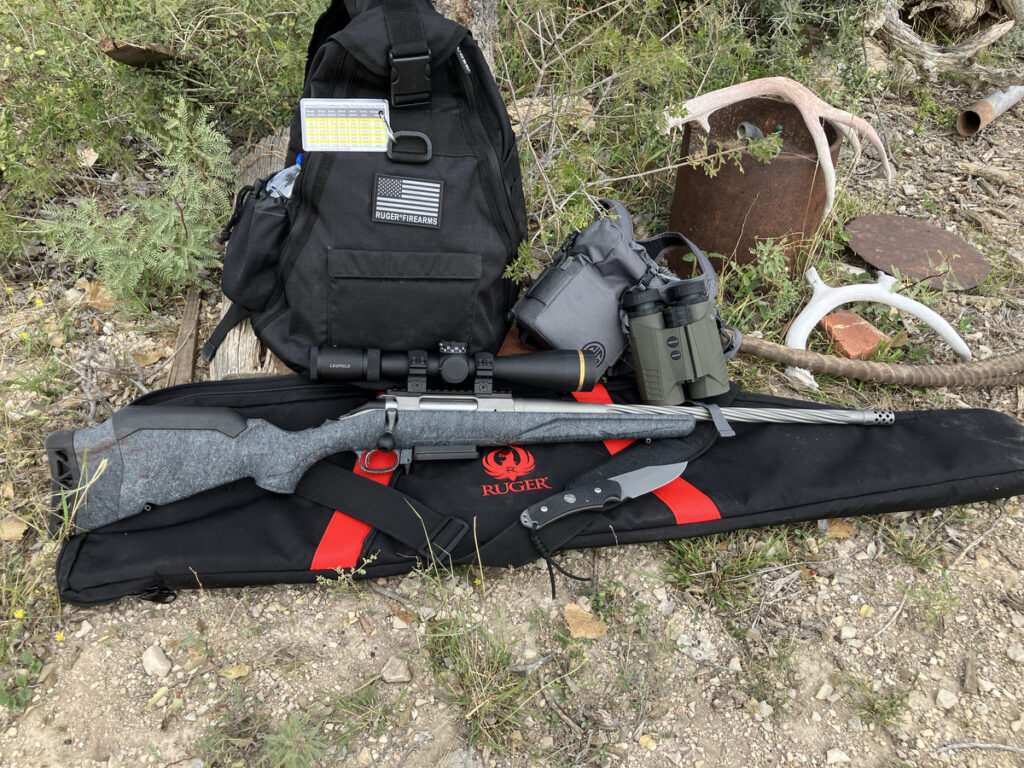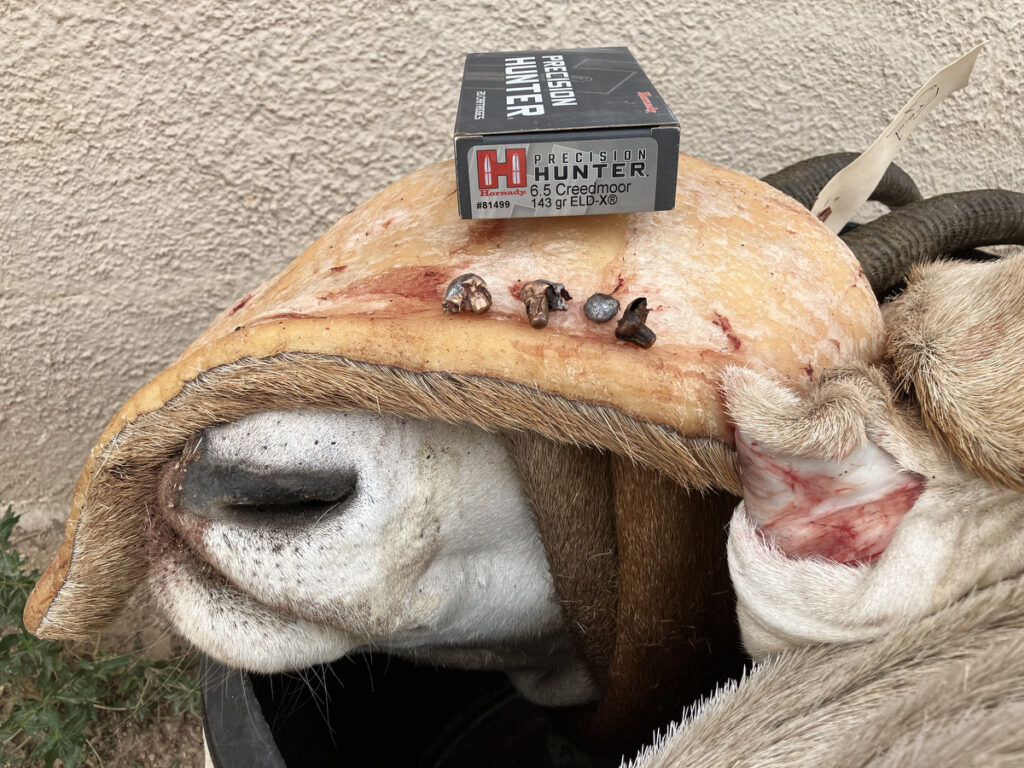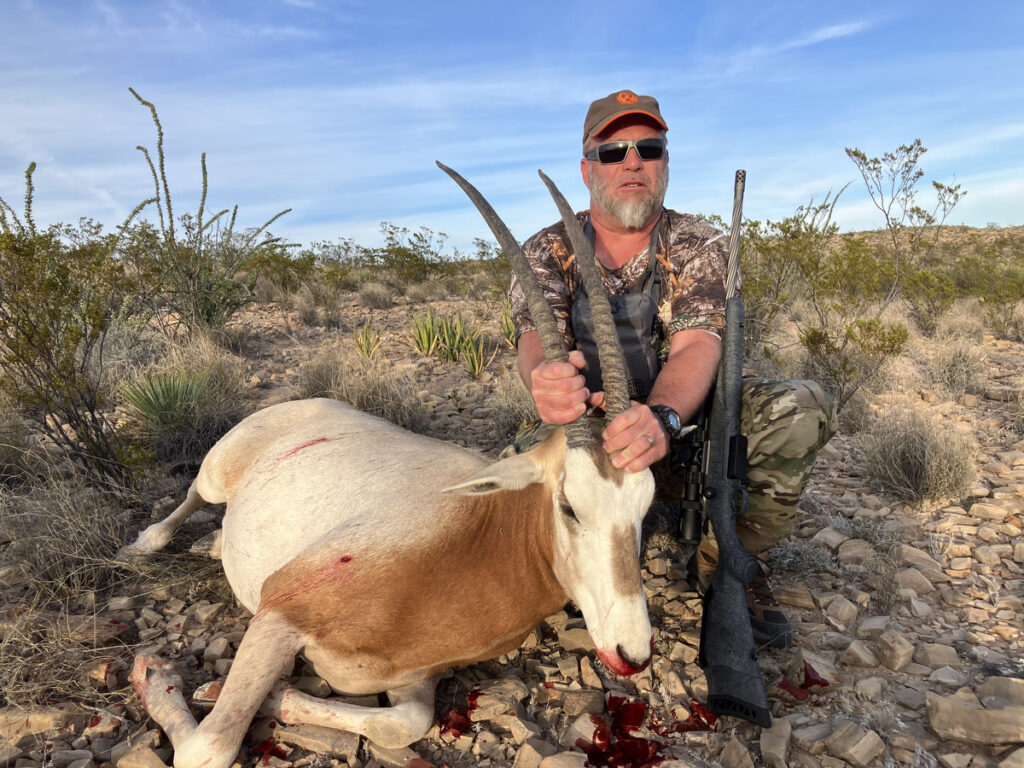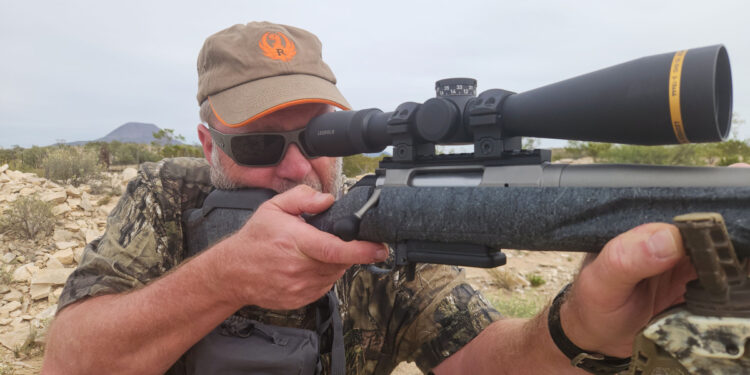By Todd Burgreen
We all perk up when we hear something new is being introduced in the firearm world. However, how often are we disappointed when “new” turns out to be nothing more than a different color or some small added tweak. This is not the case with the Ruger American Generation II rifle. The Generation II is much more than a souped version of the original Ruger American bolt action rifle. So many enhancements have been made to the platform that the American Rifle Generation II stands as further proof of Ruger’s commitment and responsiveness to its customers, whether by consistently providing new products or by continually improving those already in its catalog.
In fact, Ruger could have chosen to go with an entirely different model nomenclature with the American Generation II, such is the departure between Generation I and Generation II models. The American Rifle Generation II is quite a leap forward. It is unrecognizable from its predecessor. The new stock features a Monte Carlo-esque contoured and raised cheekpiece. Length-of-pull and comb height is adjustable, as well. Length-of-pull can be reduced to 12 inches for smaller statured hunters. And likewise, the Generation II’s light weight (6.5 pounds) will appeal to smaller customers, it’s also sure to be appreciated by all shooters looking to lighten their load in the field.

SUM OF ITS PARTS
Ruger’s patented Power Bedding integral bedding block system secures the receiver and free-floats the cold hammer-forged barrel for improved accuracy. The 20-inch spiral fluted, cold hammer-forged barrel will raise eyebrows with its aesthetics and put user on notice something new is at hand with this Ruger rifle. The well applied Cerakote finish is easy on the eyes and provides an easy-to-maintain finish. Suppressors and muzzle brakes are gaining popularity in the bolt-action world. The barrel is threaded and arrives wearing an effective radial muzzle brake. The ergonomics of the stock allow for a comfortable, repeatable cheek weld combined with hand and finger placement conducive to pulling the 3- to 4-pound Ruger Marksman adjustable trigger.
Without going into minutia, the Ruger Marksman trigger features a distinctive release lever in front of the trigger shoe proper. This is the secret to maintaining minimal trigger weight, without creep, while keeping the system safe. The release lever must be activated (i.e. pulling the trigger) before the sear will move and fire the cartridge.

The Generation II’s steel receiver is topped with a factory installed optics rail compatible with Picatinny-type scope mounts. This simplifies optic mounting. The single-piece, three-lug bolt cycles smoothly and features a full diameter bolt body, dual cocking cams, and an oversized bolt knob that can be unscrewed and replaced by end user. The bolt’s 70-degree throw keeps it clear of any mounted optic. Ruger has improved the finish on the bolt action for slicker manipulation. Tighter overall tolerances, including those found in the chamber, boost accuracy potential. A three-round, detachable, AI-style box magazine feeds rounds into the chamber. Optional 5- or 10-round AI-style magazines are available.
A tang-mounted safety completes the action. The Generation II’s safety has three positions—forward for fire, middle safe (where bolt can still move), and rear safe (where the bolt is locked down.) If you’ve ever been afield in thick vegetation, you know that a bolt can be inadvertently opened, dropping a round out of the action, when pushing through brush. This can pose a problem when finally encountering your prey. This is an important detail, and one that Ruger understood and accounted for after listening to its customers.
HANDS ON
I had the opportunity to handle the Ruger American Rifle Generation II chambered in 6.5 Creedmoor extensively in the field and at my home range. Ruger currently lists the rifle in other calibers with more on the way. Interestingly, 7mm-08, 450 Bushmaster, and 204 Ruger are some of the initial offerings. A Leupold VX-5HD 3-15×44 optic was mounted to the Ruger’s receiver. Hornady’s 143-grain ELD-X Precision Hunter loads proved a favorite in the rifle for its combination of accuracy and terminal performance.

My Ruger American Rifle Generation II experience stretched most of the fall starting with a West Texas hunt for scimitar oryx. A zero-confirming session upon arrival in the Backcountry Hunts Texas camp produced 1.5-inch three-round groups with the Hornady 143-grain ELD-X load and the Leupold VX-5HD optic. That’s certainly acceptable from the bench and for the first time firing the rifle. More formal range time showed the Hornady 143-grain ELD-X performing near 1-MOA accuracy levels. The Leupold optic and Hornady load stayed constant for the rest of the fall with the Ruger American Rifle Generation II when geography turned to the Mid-Atlantic and the quarry turned to deer.
PERFORMANCE
| Avg. FPS | Avg. 3-Shot Group @100 yards (in.) | Best 3-Shot Group @100 yards (in.) | |
| Hornady 129-gr SST | 2767 | 1.66 | 1.33 |
| Hornady 143-gr ELD-X | 2643 | 1.33 | 1.25 |
| Federal 140-gr Accubond | 2686 | 1.5 | 1.33 |
There’s no better field test for a hunting rifle than pursuing a herd animal like the scimitar oryx. The males weigh 310 to 460 pounds and the females 200 to 300 pounds. Typical of African animals, the hide is surprisingly thick. This is important to know when selecting a rifle and bullet combo. With multiple pairs of eyes on you, stalks are challenging and generally long affairs involving lots of walking, even crawling, to shrink every yard of distance before taking your shot. Typical engagement range is 200 to 300 yards. A rifle needs to be well balanced, portable, hardy, and accurate to excel in this type of hunting.

With the West Texas camp at an elevation of 5035 feet, the Ruger American Rifle Generation II proved ideal with its well-balanced sub-7-pound weight, especially considering the ever-changing terrain of plateaus, canyons, ridges, and rocky outcrops. The new splatter patterned stock provides excellent grip for miles of carry along with outstanding ergonomics when shouldering. The American Generation II’s forend is contoured in a way that guides your offhand fingers into subtle grooves on each side for a positive grip. The Leupold VX-5HD reticle was “there” and ready to go when shouldered, no matter how out of breath I might have been.

MOUNTAIN MOMMA
The rugged and steep terrain of northeastern West Virginia was another challenging setting for the Generation II. Here, a rifle is needed that features accuracy from tree stands or ground blinds, yet also provides the handling characteristics that enable still hunting techniques. This puts the onus on scouting and choosing the best ambush position. Most people don’t realize that, even with the relatively short ranges involved in thick timber hunting, pinpoint accuracy is crucial when working in a three-dimensional, vegetation-constrained shooting lane. Of course, if a 300-yard shot presents itself as the only option, having the ability to successfully place the round where needed is an asset.
Still hunting is where the Generation II comes into its own. As the name implies, still hunting is walking stealthily through an animal’s habitat, stopping frequently, sometimes for long periods, to look and listen for game. As a rule, its common to spend at least ten times longer being still than walking. Still hunting is stalking your prey on its own terms. The Generation II’s superior handling and natural shouldering attributes make quick, well-placed shots possible when an animal presents itself.
The Generation II was an asset in Texas where a large scimitar oryx bull was taken after a long stalk. Multiple rapid shots cemented my respect for the Ruger American Rifle Generation II. Similar successes followed in West Virginia and Virginia for whitetail. My son and I both took deer with it. He nabbed a fine nine-point mountain buck that was a close-range affair. The buck exploded from cover in pursuit of a doe, allowing my son only a few seconds of decision making and engagement time. My harvest was a more typical scenario of sniping a doe from a trail 100-or-so yards away. She was not aware of my presence while I was standing a behind a tree monitoring the crossing.
RECAP

Any hunter should consider the Ruger American Generation II for their needs. The specific role to be filled is up to the end user. The American Rifle Generation II excelled in the West Texas expanse, as well as the steep woodlands of the inland Mid-Atlantic. The Ruger American Rifle Generation II bolt-action rifle, equipped with Leupold’s VX-5HD optic and Hornady’s 143-grain ELD-X Precision Hunter load, proves you don’t need a multi-thousand-dollar rifle to have an accurate and potent hunting rig. Ruger incorporated as many features as possible in the American Rifle Generation II while maintaining affordability. The moderate price of the American Rifle Generation II is only a sweetener considering we found Ruger made no cost-cutting compromises that could affect the rifle’s performance. I expect hunters to reward Ruger with their patronage based on my experience with the American Rifle Generation II.
SPECIFICATIONS
| Make | Ruger Firearms |
| Model | Ruger American Rifle Generation II |
| Caliber | 6.5 Creedmoor |
| Weight | 6.5 lb. (empty) |
| Length | 41.25 in. (overall) |
| Barrel | 20 in. |
| Capacity | 3-round magazine (AI-style) |
| MSRP | $729 |
| URL | ruger.com |











